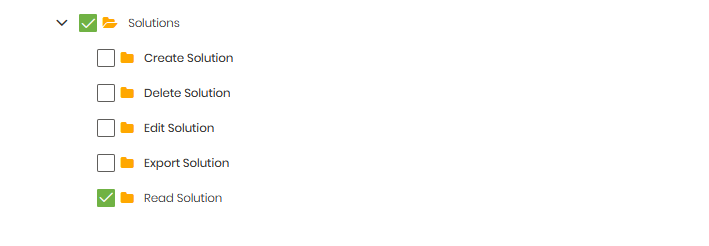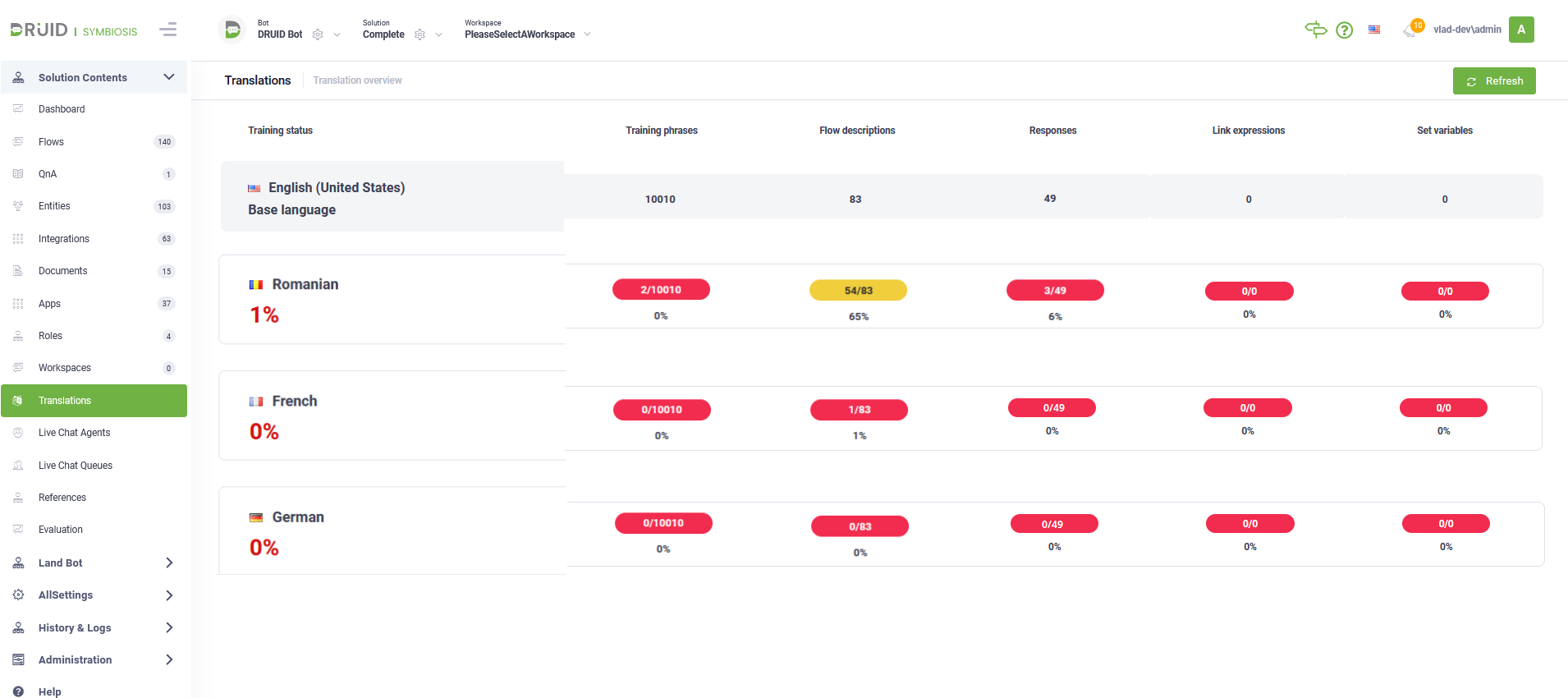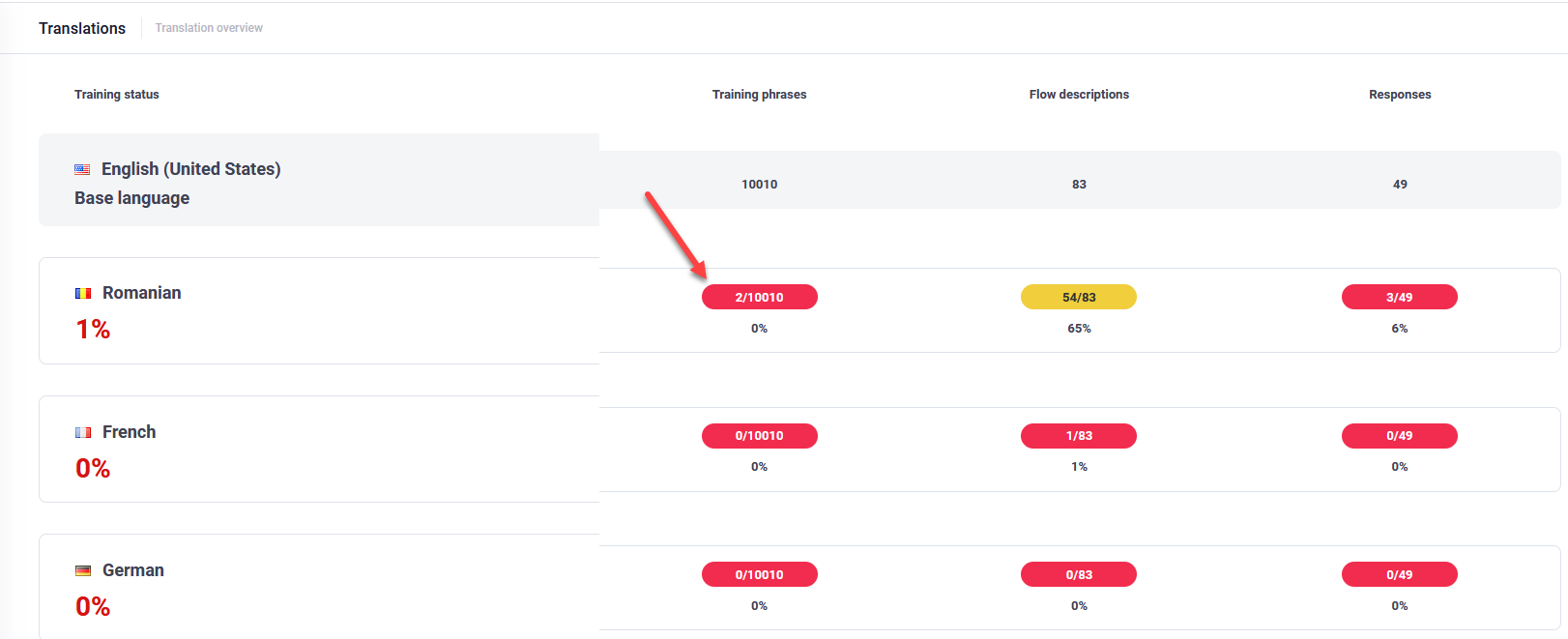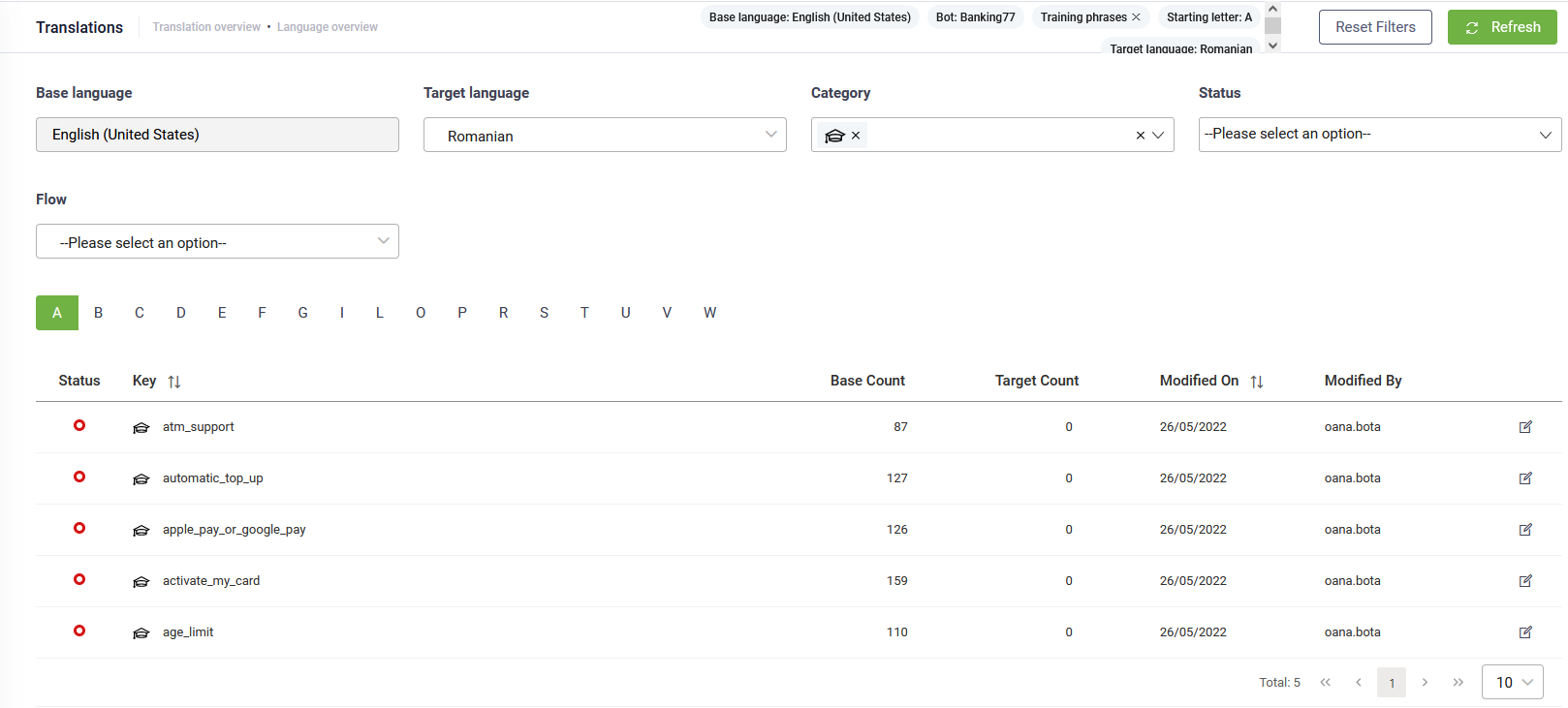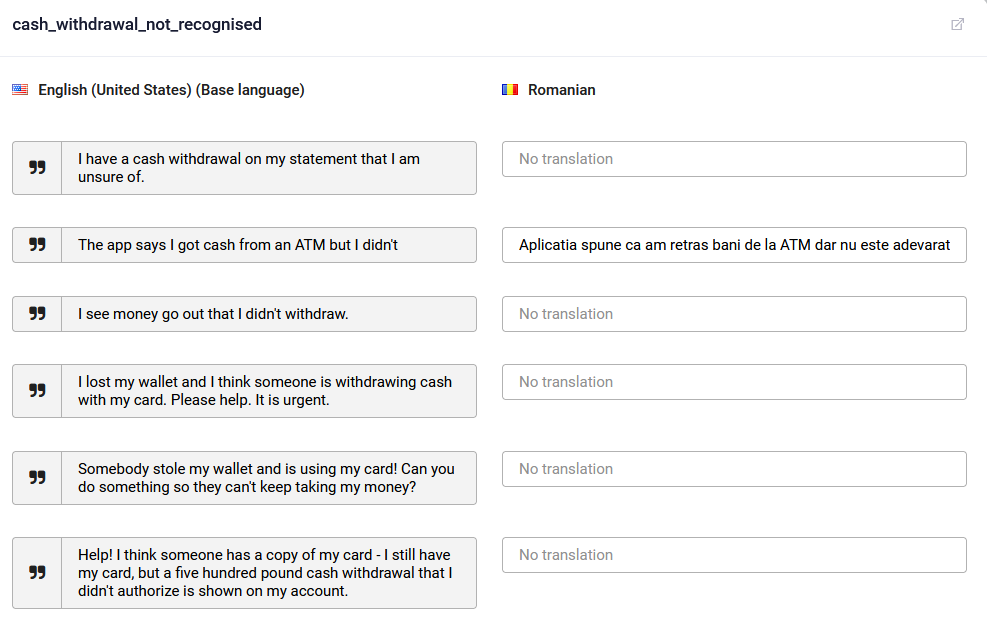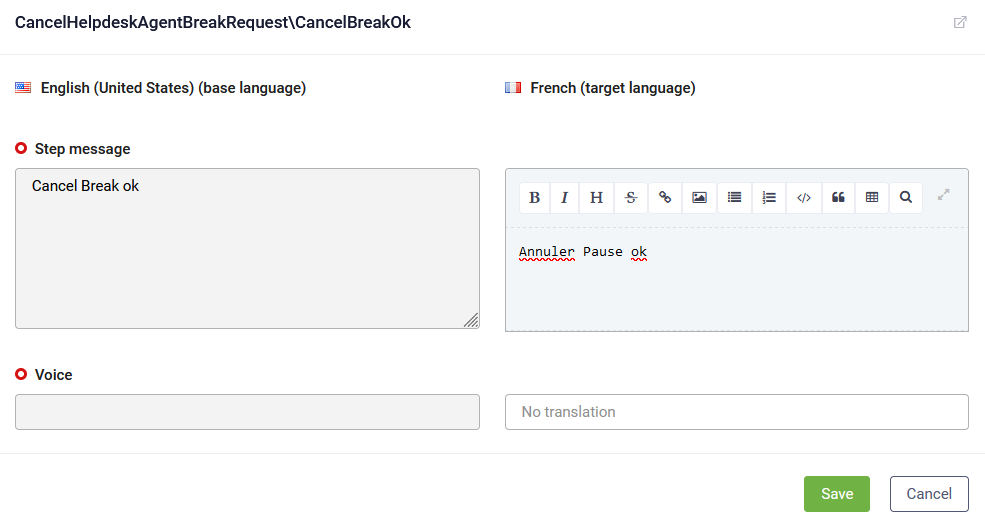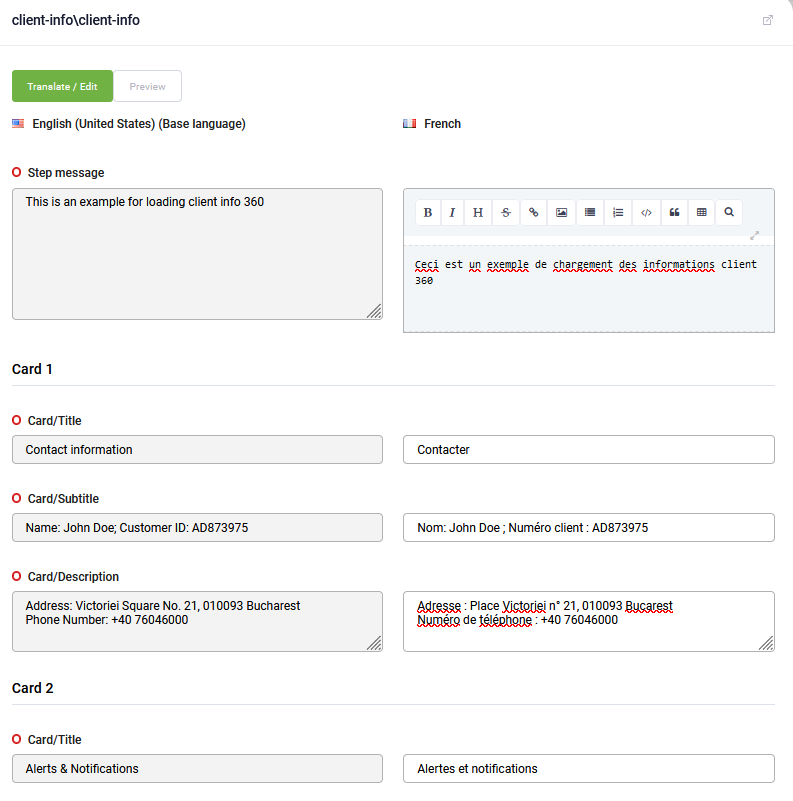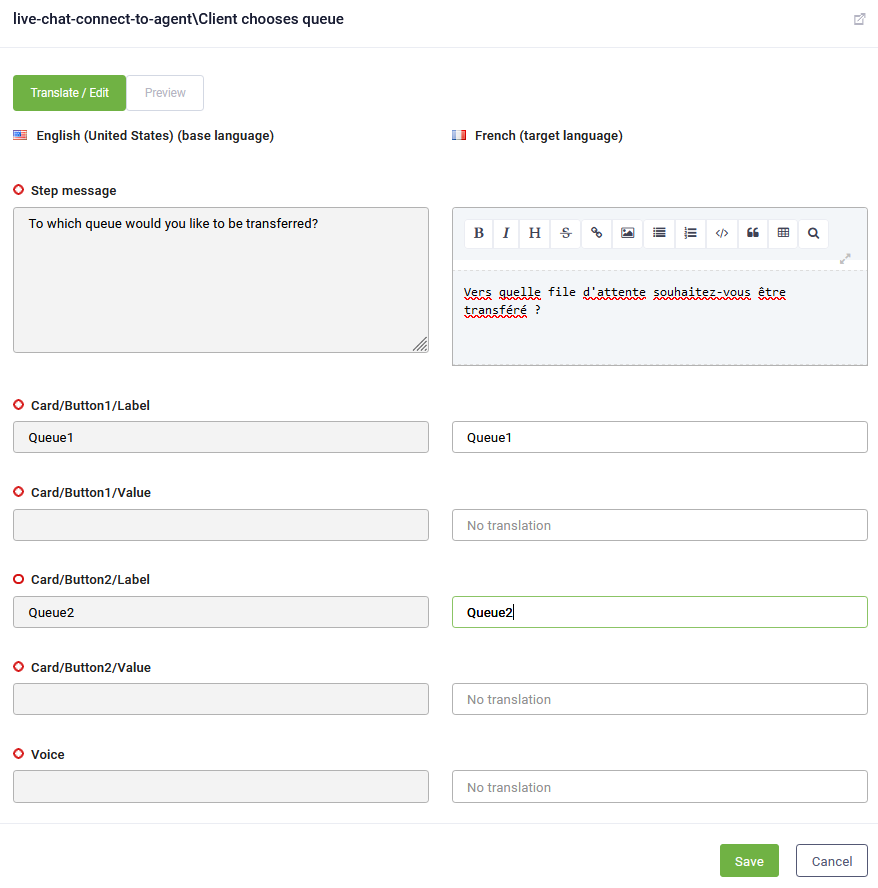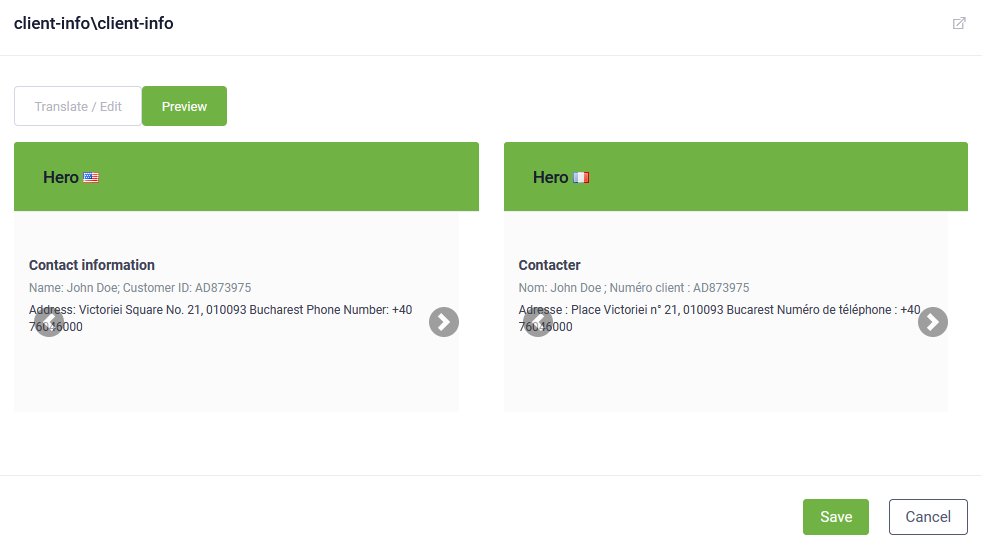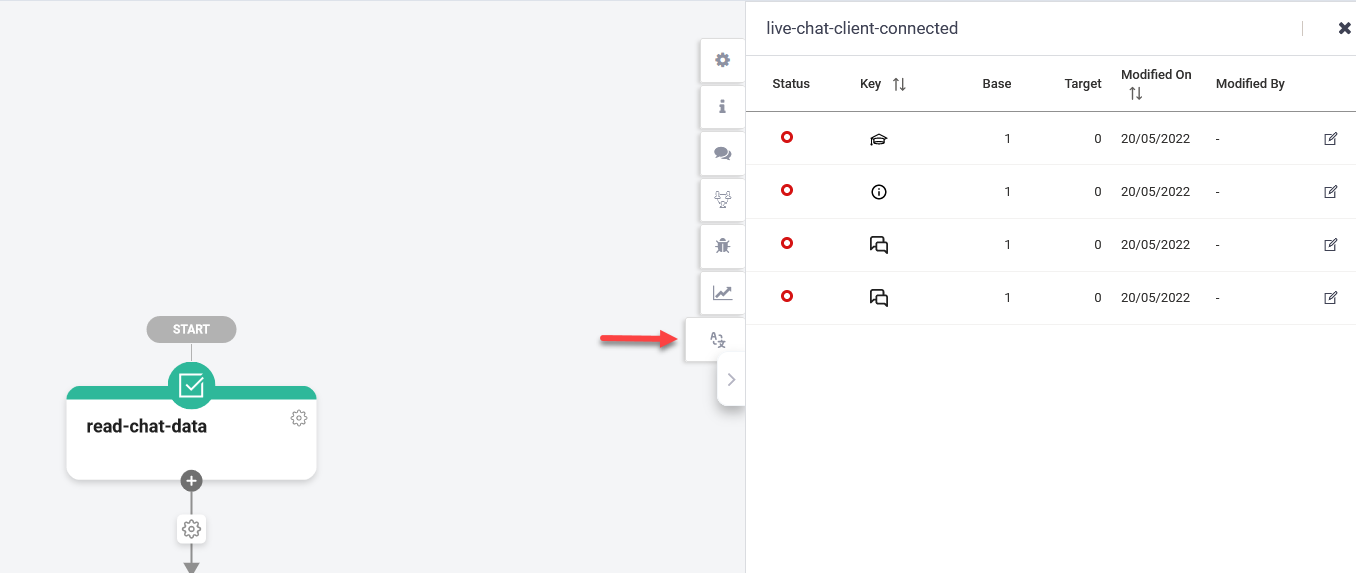Translation Tool
DRUID Translation Tool enables translators and bot authors with access permissions to the Translation Tool streamline multilingual bots by easily translating bot elements from a centralized point within DRUID Portal.
The Translation tool is particularly useful for translators who are in charge of ensuring that the multilingual DRUID bot is translated in all additional languages, without requiring DRUID technical knowledge. It enables translators to:
- Get a high level overview of all translations per bot languages within a specific solution.
- Get an overview of elements translations per bot language split by bot components: training phrases, flow descriptions and responses (messages, variables set on the steps).
- Easily translate untranslated bot elements.
Required security role permissions
- Grant your translators with a dedicated security role, which has following permissions: Pages > Translation Tool, Bot Designer > Read Bot and Solutions > Read Solution.
-
If RBAC is enabled on the tenant, on the solution Author By section, select the Translator role and select the permissions Read Bot Settings and Read Flow .
- If you want the bot authors to use the Translation Tool, grand them permission to access the Translation tool.
- If you want to allow advanced translators to redirect from the Translation Tool to the Flow Diagram, also grand them permissions to read, create and edit Flow Designer.
Accessing the Translation Tool
To access the Translation Tool for a specific chatbot, select the bot and the solution. From the main menu, click Translations.
The Translations Overview page provides you with an overview of how many elements are translated from the default bot language into additional bot languages.
The translation overview is broken down per training phrases, flows description and responses.
The coloring of the percentages indicates how elements within a category are translated:
- Grey – all elements are translated.
- Orange – more than 50% elements are translated.
- Red – less than 50% elements are translated.
Viewing translatable elements for a specific bot language
For the desired language, click on the percentage or label in the corresponding category column (e.g., Training Phrases).
The Translation page appears which displays all flows within the current solution.
DRUID provides extensive filtering options:
- Target language – change the translation target language. By changing the language, the table will update to accommodate the selected language.
- Category – change the bot component (bot elements). The table will update to accommodate the selected category. It’s a multi-select filter; based on your needs, you can select one, more or all categories. Categories are: training phrases, flows description and responses (messages on steps).
- Status – Allows filtering elements within the selected category by translation status as follows:
- Untranslated – elements are not translated.
- Human Translated – elements translated by human when Machine Translation is active on the bot.
- Machine Translated - elements automatically translated by Machine Translation, which is active on the bot
- Translated – elements manually translated by human.
- Flow – allows filtering elements for a specific flow. This is particularly useful for bot authors managing translations.
- Alphabetical order – all elements are grouped in alphabetical order.
The table provides the following details:
| Column | Description |
|---|---|
|
Status |
The translation status of the training phrases per flow. The status untranslated indicates that none or not all category elements have been translated. |
| Key | The flow name. |
| Base count | The number of elements within the specific category defined on the flow. |
| Target Count | The number of translated elements within the specific category on the flow. |
Translating bot elements
To translate elements for a category record, click on the desired raw in the table. The translation pop-up appears, which contains all translatable elements on the selected record (all training phrases on selected flow, conditions set on specific flow steps (Link Expressions column) and set variables). The elements in default bot language are non-editable. Enter translation in additional language and save.
Example:
After saving the translations, the status of the selected record will change to “Translated” and the Target Count will change to the number of translated elements on that record (Base Count equals Target Count).
When choosing to translate elements of a flow step, the pop-up will render translatable elements on the step based on the step type, including variables set in Set Variables section on the flow step (if any).
Example: message step
Example: hero card step
Example: choice step
Bot authors and translators with access permissions to the Translation Tool and Flow Designer (see prerequisites) can navigate from the Translation pop-up to the Flow Diagram by clicking the open flow icon ( ) at the top of the Translation pop-up. A new browser window will open the Flow Diagram and the translation elements will display in the Flow Diagram Editor per category.
) at the top of the Translation pop-up. A new browser window will open the Flow Diagram and the translation elements will display in the Flow Diagram Editor per category.
Bot authors can also access the Translation tool at a flow level in the Flow Diagram by clicking the Translation Tool icon ( ). They can edit translations using the Translation tool in the Flow Diagram Editor.
). They can edit translations using the Translation tool in the Flow Diagram Editor.

